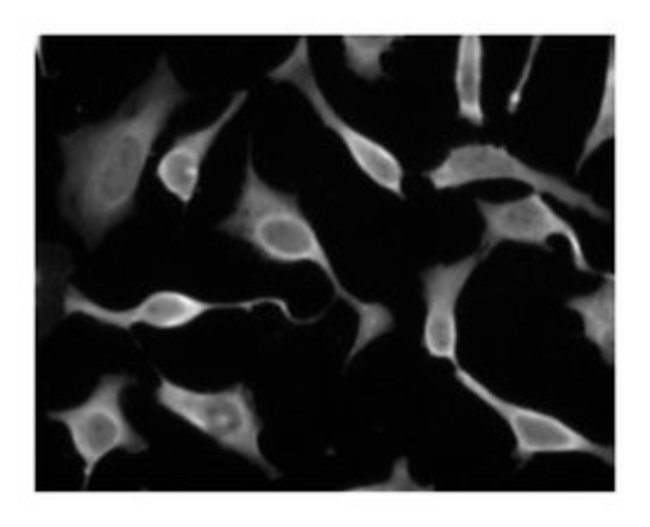eIF-5a Mouse, Unlabeled, Clone: 26, BD, Mouse Monoclonal Antibody, Each

Details:
Initiation of eukaryotic translation involves a series of reactions mediated by multiple eukaryotic initiation factors (eIFs). However, one member of this family, eIF-5a, may have multiple protein functions. eIF-5a was originally identified as an initiation factor due to its binding of ribosomes, and its stimulation of methionyl-puromycin. Regulation of initiation may not be the major function of eIF-5a, since it functions as a targeting protein for the HIV protein, Rev, and the T-cell leukemia virus type 1 protein, Rex. In Xenopus oocytes, eIF-5a interacts with the nucleoporins Nup214, Nup153, Nup98, and Nup62, and is required for Rev-NES interaction with exportin1. These interactions may be involved with eIF-5a nuclear export of Rev protein, and eIF-5a requirement for Rev-mediated viral RNA export. eIF-5a is ubiquitously expressed, and is the only known eukaryotic protein that contains the post-translationally formed hypusine residue. Modification of eIF-5a with hypusine is coupled to cell proliferation, and disruption of this residue in yeast eIF-5a is lethal. Thus, eIF-5a may be an important nuclear transport protein with conserved function in many species.Host Species: MouseClone: 26Isotype: IgG1Species Reactivity [for Features Main]: HumanImmunogen: Human eIF-5a aa. 58-154Bioimaging, Immunofluorescence, Western Blotting
Additional Information
| SKU | 10135472 |
|---|---|
| UOM | Each |
| UNSPSC | 12352203 |
| Manufacturer Part Number | 611977 |

